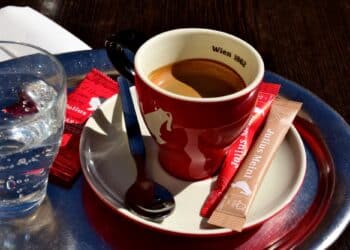Crema Coffee Garage and the University of Newcastle have released a report measuring the caffeine content of coffee when prepared via different brewing methods. Espresso was found to have the highest concentration, which extracted 4200 milligrams of caffeine per litre.
“While caffeine analysis of espresso has been explored, we found there was little information that showcased caffeine content in other methods and even fewer resources contextualised that data for the Australian market and consumers,” Crema Coffee Garage Project Manager Ravelle King says.
“The results of this study are a guide to understanding which brew methods produce more or less caffeine, allowing consumers to make more informed decisions about how they consume coffee.”
The study measured caffeine content of coffee prepared through stovetop espresso, pour over, cold brew and French press to provide consumers with accurate information about their caffeine consumption.
The second strongest method was cold brew at 2240 milligrams per litre, stovetop at 2192 milligrams per litre, French press at 742 milligrams per litre, and pour over at 692 milligrams per litre.
The study used a Colombian single origin bean to minimise variability in the results.
“We compared the brew methods by analysing for caffeine content in each of the brew extracts using high-pressure liquid chromatography,” University of Newcastle Chemist Dr Ian van Altena says.
Although espresso contains the most caffeine when compared millilitre to millilitre, the study says Australians typically consume more than the recommended serving size of alternative methods.
“There is no uniform serving size for all methods and each brew is served differently, which increases the amount of caffeine per serve. For example, the average person will serve the entire contents of a three-cup stovetop in an eight-ounce cup, which is double the caffeine content compared with an espresso in the same size cup,” Ravelle says.
“The recommended small serving size before adding extra water or milk is 30 millilitres for espresso, 30 millilitres for stovetop, 60 millilitres for cold brew, 100 millilitres for French press, and 250 millilitres for pour over.
“Based on an eight-ounce cup and these recommended serving sizes, consumers can drink three cups of espresso, five cups of stove top espresso, two cups of cold brew, five cups of French press or two cups of pour over before exceeding the recommended maximum caffeine intake of 400 milligrams per day.”
For more information, visit https://cremacoffeegarage.com.au/caffeine-study




